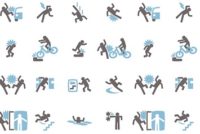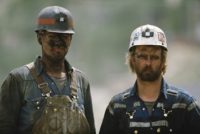Modern safety management goes beyond covering traditional workplace accidents to now being equally concerned with illnesses caused on and even off the job. This section will explain what you need to know to avoid both injuries and illnesses, and to track your progress in reaching this goal.
By itself, winter carries a heightened risk of fire, because it involves more of the things that create warmth and light—fireplaces, space heaters, candles, cozy blankets. During the holidays, even more light, heat, and potentially flammable decorations are added to that mix.
Yesterday in our series on holiday hazards, we talked about the ways workers can hurt themselves when they’re trying to get at something that’s out of reach. But falls from elevations are not the only hazard workers face during the holidays; they may also be at increased risk from falls on the same level.
Ah, the holidays! Twinkly lights, evergreen wreaths, chirpy music, family gatherings … and hazards that don’t apply to any other time of year. The EHS Daily Advisor’s upcoming series on holiday hazards will help you remind your workers of the hazards their holiday activities can present, both in and out of the workplace. The best […]
The 2018–2019 flu season is fully upon us and, according the Centers for Disease Control and Prevention (CDC), may continue well beyond the beginning of spring 2019. February is typically the peak month (by a large margin) in the flu season. This can be a high-risk period for workers in healthcare facilities where sick people […]
In October 2018, researchers associated with the California Department of Public Health (CDPH) issued a study showing that between 2007 and 2014, almost 140,000 workers in the state reported carpal tunnel syndrome (CTS) workers’ compensation claims. This adds up to 6.3 claims per 10,000 full-time equivalent workers. While that figure by itself may not appear […]
Data from the Centers for Disease Control and Prevention (CDC) have been making headlines lately, most of them referring to the decrease in life expectancy in the U.S. due to suicide and drug overdose. The National Safety Council (NSC) found in the numbers another disturbing trend that is of concern to EHS professionals—a rise in […]
Determining whether an injury or illness must be recorded on your OSHA 300 Log can be tricky, to say the least. Follow the steps on our flowchart as it guides you through OSHA’s criteria for recordable cases.
The National Institute for Occupational Safety and Health (NIOSH) wants to know why only 35% of active coal miners are participating in NIOSH’s voluntary Coal Workers’ Health Surveillance Program (CWHSP). The CWHSP offers miners free health screenings, including chest X-rays and spirometry examinations, which help detect dust-induced interstitial lung disease (black lung or coal workers’ […]
More people are surviving cancer, but cancer is occurring in more people (one factor associated with longer life spans). The most recent data compiled by the National Cancer Institute, which was released in April 2018, show that from 2006 to 2015 cancer death rates decreased by 1.8 percent among men and 1.4 percent among women. […]
OSHA has ordered Springfield Terminal Railway Inc. to compensate an employee who faced an investigative hearing with possible disciplinary action or termination for reporting an on-the-job injury at its facility in Andover, Massachusetts. OSHA ordered the company to pay the employee $10,000 in compensatory damages, $75,000 in punitive damages, and attorney’s fees.









